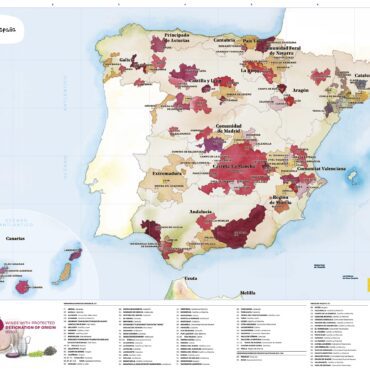-
 play_arrow
play_arrow
BayRadio Listen Live Broadcasting in Spain


All you need to know about hip fracture
A hip fracture is a serious injury that particularly affects the elderly, and is
mainly associated with osteoporosis and falls. Although it is a severe
problem, it can have complications.
Osteoporosis is one of the main causes of hip fracture in people over 65 years of age. It is a skeletal disease in which there is a decrease in bone density. As a result, the bones become more porous, less resistant to shocks and break more easily.
The physiological condition and menopause of women from middle age
onwards means that they are the ones who suffer most from this sort of
injury.
However, there are other risk factors that contribute to the high rate of hip
fractures in the elderly, such as the decrease in mobility associated with age
and the loss of visual and hearing ability. “The combination of these factors
increases the likelihood of falling and trauma resulting in a hip fracture of
traumatic origin,” as explains, Dr. Maciej Tadeusz Was, a trauma specialist
at Quirónsalud Torrevieja.
When to operate?
Hip fractures “need surgical treatment in almost all cases,” according to
Dr. Maciej Tadeusz Was, a hip surgery specialist, which should be performed as soon as possible to ensure greater success.
Not operating on the fractured hip will result in pain and deformity in the
area, as well as the inability to walk. Surgery is therefore the best option.
What does the surgery involve?
The surgery will depend on the type of fracture sustained. However, it
usually lasts for about 60 to 120 minutes. The type of surgery will depend on the type of fracture:
- Femoral neck fracture: The type of treatment depends on the type of femoral fracture, bone quality and overall condition of the patient.
- Osteosynthesis with cannulated screws: this treatment allows to preserve anatomical joint without placing a hip prosthesis. It is a minimally invasive procedure and includes closed reduction of the fracture using X-rays and fixation with cannulated screws almost percutaneously. After this surgery, the patient is not allowed to stand on the leg for 8-12 weeks, and can walk with the aid of a walker. Patients who cannot walk using a walker are excluded from this surgical treatment.
- Hip prosthesis: the implantation of a hip prosthesis depends on the type of femoral neck fracture and the overall condition of the patient. The prosthesis can be total or partial, cemented or cementless. Generally, the total prosthesis is reserved for patients under 75 years of age and cementless prostheses are used in these patients. For patients over 75 years of age, if they do not have osteoarthritis of the hip, a partial prosthesis can be used and if their bone quality is not good, a cemented prosthesis can be used.
● Trochanteric fractures: this involves reducing the fracture using X-rays and restoring the anatomy of the hip and stabilising it with an osteosynthesis system that holds the fracture in position until it is completely healed. Currently, nails are used for this type of fracture, says Dr. Was.
When will I be able to walk?
Once the patient has undergone surgery, mobilisation is recommended as
soon as possible to strengthen the muscle tone of the operated limb and
avoid the dreaded muscle atrophy and joint stiffness. If the progress is
satisfactory, sitting position is advised after 12-24 hours. Starting to walk depends on the overall condition of the patient and the type of operation
performed, and should begin between 24-48 hours after surgery. However,
in cases of osteosynthesis of the femoral neck, standing on the operated leg
is not allowed until the bone is joined, which occurs after 8-12 weeks. After
implantation of a cementless prosthesis, the patient is not allowed to fully
or partially stand (depending on the surgeon’s recommendations) for 6
weeks. Patients with nail-fixed trochanteric fractures must walk with partial support until the bone is completely healed, which takes about 8
weeks.
Rehabilitation will depend on the specific characteristics of the patient. In
general, the patient is expected to return to pre-fracture functional status
within three to six months after surgery.
Are there any risks during surgery?
Although complications may arise after surgery, the most common scenario
after a hip fracture surgery is that the patient progresses well and allows the mobilisation and walking described above during the initial postoperative days.
Our Orthopaedic Surgery and Trauma Unit at Quirónsalud Torrevieja has
some of the best specialists in hip diseases. For more information: QR of the
unit.

Written by: BayRadio News
Similar posts
Recent Posts
- Robotic Surgery for Prostate Cancer: What Is Radical Prostatectomy and How Does the Da Vinci Robot Improve It
- What Is Fibromyalgia? Symptoms and Treatments of an Invisible Illness That Requires Specialized Attention
- AMASVISTA Glass: 10 reasons to choose SUNFLEX glass curtains
- Robotic Surgery, Immunotherapy and Comprehensive Care Take Centre Stage at Pancreatic Cancer Conference at Quirónsalud Torrevieja
- Robotic Surgery Against Ovarian Cancer: Greater Precision, Less Pain and Faster Recovery

Ctra. Cabo La Nao, CC La Nao, Local 6 03730 Javea, Alicante, Spain
Advertise with us
Do you have a business in Spain? Do you provide a service to the expat community in Spain? Would you like your message to reach over 500.000 people on a weekly basis?
BayRadio is a community orientated radio station offering fantastic content to our many listeners and followers across our various platforms. Contact us now and find out what Bay can do for you!
Our business is helping your business grow.
BAY RADIO S.L. © 2024. ALL RIGHTS RESERVED. WEB DESIGN BY MEDIANIC







